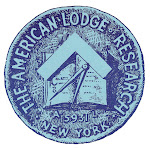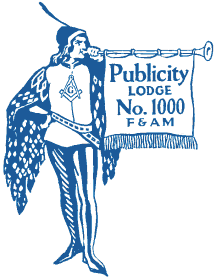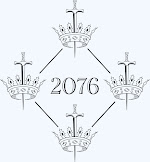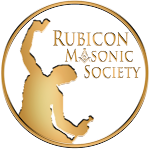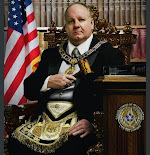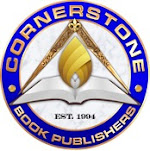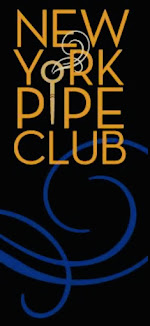 |
| Martin Faulks |
Showing posts with label Philalethes Society. Show all posts
Showing posts with label Philalethes Society. Show all posts
Friday, October 17, 2025
‘Eugenius Philalethes at Masonic Week’
I swore off attending Masonic Week several years ago so I may allocate my limited travel budget (both money and time) to other destinations, but I may have to revert to setting aside a February weekend in Virginia for the Philalethes Society. With the dissolution of the Masonic Society, the Friday night dinner slot again belongs to Philalethes and, on February 6, the Society will host its banquet at seven o’clock. From the publicity:
Philalethes Society Banquet
Friday, February 6, 7 p.m.
DoubleTree by Hilton Hotel
Crystal City, Arlington, Virginia
The Philalethes Society will host the Friday night banquet during Masonic Week 2026.
Follow Your Guide:
Thomas Vaughan and Freemasonry
presented by Martin Faulks, FPS.
The pseudonym “Eugenius Philalethes” itself carries significant esoteric and, eventually, Masonic weight. The earliest use of the name was Thomas Vaughan (1621-66), a Welsh clergyman, philosopher, and alchemist. Vaughan’s writings explored Rosicrucian philosophy, alchemy, and Christian Mysticism, and he was known as a member of the “Society of Unknown Philosophers.” While Vaughan predates the formal establishment and widespread influence of modern Freemasonry, his patron was Sir Robert Morray, who is known to have been a member of the Craft. In addition to this, we find many hints of Freemasonry in his alchemical works. Hoodwinked figures being led on journeys, experiences of being divested of metal, and much more can be found for those who have eyes to see. Likewise, Vaughan’s writing has also been quoted and included in the rituals and teaching of Masonic orders. In this talk, Martin Faulks will explore all these themes and showing connections that never have been noted before.
One of the earliest founded lodges in England, Burlington was the first ever to have an Inner Guard. It was also one of the two founding lodges of the Emulation Lodge of Improvement (which he still attends regularly), which went on to found Emulation Ritual, the most popular form of Craft ritual in the United Kingdom today.
Having found a passion for Freemasonry, Bro. Faulks, who was at the time running a book distribution company, felt he would like to put more into the Craft and so approached David Allan to see if there was an opportunity with such an eminent firm as Lewis. He was first offered the position of Marketing Manager of the Lewis Masonic imprint in 2005 and later promoted to General Manager in 2012. In 2021 he took over the reins and became the new managing director of the company. Through his work with Lewis Masonic, he has made it his duty to help spread the good works of Freemasonry and promote a positive image of the Craft.
The banquet is open to all Masonic Week attendees and their guests. Tickets cost $65 each and are reserved via the Masonic Week 2026 website.
In addition to the banquet, Philalethes will host its 98th Annual Assembly the following morning. Click here for the entire itinerary of the weekend.
Tuesday, June 3, 2025
‘Get the Philalethes for your lodge’
The Philalethes Society announces a way for Masonic groups to benefit their members by subscribing to its quarterly journal. No, not a copy of the printed edition that gets torn to pieces in the melee over who gets it first, but a PDF for your lodge (or chapter, etc.) to disseminate by email. From the publicity in the current issue:
Lodge and Appendant Bodies
Subscription Program
A New Program of Masonic Education for Every Lodge and Masonic Group
Since its founding in 1928, the Philalethes Society has been devoted to the promotion of the highest quality Masonic education and research. Eager to extend our mission of promoting quality Masonic education, the Executive Board of the Society is offering a Lodge Subscription Program.
As many Masons prefer electronic dissemination of materials, we would like to put the Philalethes journal into the hands of your lodge brothers or masonic group brothers who want to continue their quest for further Light in Masonry. For a nominal annual fee, every lodge can send out an electronic copy of the Philalethes four times a year via an email attachment of our journal in PDF format.
All we need is some basic contact information and payment made on a lodge or Masonic organization’s check. Here is a great opportunity to help your members be better informed and grow in their Masonic knowledge.
1. Distribution of Philalethes to your members via the Lodge Subscription Program may require the permission of your Grand Lodge or Appendant Body.
2. Recipients of Philalethes via electronic delivery will be considered “subscribers” rather than members of the Society, and may not use the initials MPS nor vote.
3. Only members of your lodge/body are entitled to this PDF copy of Philalethes.
4. A subscription is for one year (four issues) of Philalethes, which comes out quarterly.
5. All subscriptions to this program must be made on a lodge or appendant body check.
6. We invite your members to submit thoughtful and well-researched articles to our Editor for consideration.
7. This program is open to all lodges, research lodges, and appendant or concordant bodies of Freemasonry.
8. For further questions, please contact the Philalethes Society’s Secretary here.
I haven’t been able to interest The ALR in reviving Knickerbocker Chapter, so maybe this could be the way to involve the lodge in the Philalethes Society. We’ll see.
Tuesday, April 15, 2025
‘Observations on the History of Masonic Research’
 |
| Nineteenth century Vermont apron as described in the current issue of Philalethes. See below. |
Masonic research can, and indeed should, include room for debate. It is only thus that brethren can get to the nub of a matter, sort the corn from the husk, and arrive at the best obtainable version of the truth. This would be done in a dignified and Masonic manner, and no brother should be verbally abused or ridiculed over his efforts in this regard.
I guess it had to be done, and evidently Bro. Kenneth Jack is just the guy to do it. The “it” is a primer on Masonic research, part one of which appears in the current issue (Vol. 77, No. 3) of Philalethes, the quarterly journal of the Philalethes Society. Part of his “Observations on the History of Masonic Research” informs us of such a debate, in print for all to see, as the grand lodge era approached its sesquicentennial. More on that later.
This lengthy essay is a tantalizing Part One that starts us on the formation of Quatuor Coronati Lodge 2076 in London which, as we know, is the first Masonic lodge chartered to be the “authentic school” for Masonic research, “taking a scientific, empirical approach to the study of Freemasonry.” He takes us into research societies, namely Philalethes, which was founded in 1928 and “devoted to fearless Masonic research.” Then comes an accounting of a number of periodicals in Great Britain from previous centuries. From England:
• The Freemasons Magazine
• The Freemasons’ Quarterly Review
• The Masonic Mirror
• The Freemason
• The Masonic Examiner
• The Freemason’s Chronicle
• The Masonic Illustrated
• Freemasons Magazine and Masonic Mirror
From Scotland:
• The Masonic Mirror
• The Scots Masonic Magazine
• The Scottish Freemasons’ Magazine
• The Masonic News
• The Scottish Freemasons’ Magazine
• The Scottish Freemason
• The Aberdeenshire Masonic Reporter
• The Masonic Gazette
• The Scottish Masonic Record
• The Scottish Freemason
• The Masonic Magazine of Glasgow
• The Dundee Masonic Magazine
• The Scottish Freemason
• The Aberdeen Masonic Reporter
There is much color in Bro. Jack’s telling. On the debate over the empirical research versus the intuitive, speculative side, he quotes the estimable Douglas Knoop:
Actually, the imaginative school did not consist of writers utterly careless as to their facts, nor ought the verification of facts, which is characteristic of the authentic school, to be considered sufficient in itself and as excluding all need of imagination. Imagination as a substitute for facts is useless: as a guide to facts it may be invaluable.
Jack also brings to light an argument on whether Freemasonry is Christian and ought to be reserved to Christians only—something I have heard myself over the years. A lengthy duel commenced in the July 28, 1866, issue of Freemasons Magazine and Masonic Mirror makes the modern Freemason marvel at how eminent Freemasons of the past voiced their disagreements. A terrific read, and I’m looking forward to Part II.
There is more in this issue of course. Bro. Chris Murphy of Fibonacci 112 in Vermont shows us beautiful regalia from that state from the early nineteenth century to tell us the story of the Eddy-Robinson aprons. He writes:
During the autumn of 2022, at Manchester, Vermont, in the deepest corner of a long-neglected basement closet, tucked in the back of a large safe and wrapped in a paper sack, a Masonic treasure was found: seven fragile aprons, appearing to date to the early 1800s. Five were differently ornamented Craft aprons, each printed from the same engraved plate; four on silk and the fifth on lambskin. The remaining two were matching examples of a Royal Arch design, printed on silk. Each bore the engraver’s mark “O Eddy, sc,” and under the flap of each were the words, “Published by Lewis Roberson.” The Craft aprons included the location “Weathersfield, Vermont,” and the HRA aprons noted their provenance as neighboring “Reading, Vermont.”
What follows is an engrossing history of Freemasonry in the Green Mountain State that quickly homes in on the lives of two brethren at Eastern Star Lodge 43. Thanks to his sleuthing, Murphy attributes the manufacture of these aprons to two Eastern Star brothers: Oliver Eddy and Lewis Roberson/Robinson, who were active during the early nineteenth century.
The lodge itself disappears in 1834 during the anti-Masonic hysteria (remember, Vermont was a nerve center in the panic, having a governor in 1831-35 elected on the Anti-Masonic Party ticket).
These aprons display symbols that any of us would expect from this period before grand lodges standardized their rituals, but Murphy’s all-seeing eye discerns a quirk: a key suspended from a heart.
I recommend this paper to you for an interpretation of this unique image, and encourage you to read this issue of the journal, and urge you to pursue membership in the Society as well. Click here.
Sunday, February 9, 2025
‘Masonic Week congratulations’
Masonic Week is still underway in Virginia with the Operatives set to host its events momentarily, but watching social media I see congratulations are in order, including:
 |
| Jason Sheridan |
In addition, Dr. Heather Calloway was presented Philalethes’ Award of Merit in recognition of her work as Executive Director of the Center for Fraternal Collections and Research at Indiana University. Excellent choice!
As of Friday, the newest Blue Friar is Ric Berman, two-time Prestonian Lecturer, secretary of QC2076, et al. Ric will present his 2024 Prestonian Lecture, “The Second Grand Lodge, The London Irish & Antients Freemasonry,” at Quatuor Coronati May 8, and I hope to get him to New York City soon.
In the Allied Masonic Degrees, the new Grand Tiler is Moises Gomez. Moises, had been the Grand Superintendent for New Jersey (and is an Honorary Past Junior Grand Warden, if I recall correctly), and he is a recipient of the Fowler Award. Moises has been succeeded as Grand Superintendent by Ray Ortiz.
For the District of Columbia, Chris Ruli is the new Grand Superintendent.
In the Grand College of Rites, the new Grand Seneschal is Oscar Alleyne. (It’s nice to see Oscar receive an appointment for once!)
I know there must be other good news, but that’s all I got for you now. Congrats and good luck to everybody!
Sunday, January 26, 2025
‘Exploring the Role of Masonic Research Lodges in the 21st Century’
The announcement is out, so let me be the last to share the great news of a conference being planned to discuss the purpose of research lodges in Freemasonry today. This collective effort will be hosted by William O. Ware Lodge of Research in Kentucky with support from the Rubicon Masonic Society, Lexington Lodge 1, and the Philalethes Society at Spindletop Hall on the weekend of September 19.
Being active in three research lodges, I certainly will be there.
Rubicon Masonic Society A glimpse of last year’s festive board. |
On the night of Friday, September 19, a festive board awaits us. This thirteenth annual Rubicon Masonic Society black tie affair will bring MW John L. Cooper, III, Past Grand Master of the Grand Lodge of California, to the lectern for the keynote address “Delivering the Message of Freemasonry.”
The conference itself, “Exploring the Role of Masonic Research Lodges in the 21st Century,” will follow on Saturday. W. John Bizzack, the principal organizer of this event, will begin the day; and W. Brent Morris will share the findings of his current survey of research lodges and societies.
During the majority of the day, all in attendance will be expected to participate (and, man, do I have a lot to say!), so there will be no schedule of speakers, and this definitely is not a meeting for presenting research papers.
Conference moderators will be MW David Cameron of Ontario; RW David Daugherty of Ohio; RW Andrew Hammer of the Masonic Restoration Foundation; and W. Rich Hanson of Kentucky.
Three dozen research lodges and societies from across North America, plus the British Isles and Australia, have committed to attend this conference. If you are a research lodge Mason, you should get there too. Read all about it here, and I’ll see you there.
Wednesday, December 4, 2024
‘Philalethes to host Hamilton at Masonic Week’
Belated Happy 96th Anniversary wishes to the Philalethes Society, which reached that milestone Sunday.
Speaking of Masonic Week (see post below), the Society has two events among the February festivities on the calendar. On Friday the seventh at 7 p.m., it’ll be time for the annual banquet. The after dinner speaker will be Bro. Billy Hamilton of Texas, who will present “The Victorian Innovators.” From the publicity:
Bro. Hamilton will focus on Kenneth R.H. Mackenzie and his influential correspondence circle, including Major Frances George Irwin, John Yarker, and William Wynn Westcott. The title is inspired by J. Ray Shute and his own circle of innovators, who would later play a similar role in American Freemasonry. We will examine their friendships, alliances, and conflicts in their own words through their personal correspondence. He will also discuss the diverse degrees and rites they worked on, from those accepted in mainstream Masonry today, such as SRIA, the Red Branch of Eri, and the Red Cross of Constantine, to those now considered clandestine, including the Primitive Rite and Sat B’Hai.
The banquet is open to all Masonic Week attendees and their guests. Tickets are $60 and must be reserved at the Masonic Week 2025 website.
The following morning, at 10:30, the 97th Annual Meeting will open. Publicity again:
The Annual Assembly of the Philalethes Society will be held on Saturday, February 8 at 10:30 a.m. The meeting agenda includes annual reports from the Officers and the consideration of all matters which may lawfully come before it. The meeting is open to every Masonic Week attendee. All members of the Philalethes Society in good standing (dues current for 2025) are considered voting members.
In the meantime, this latest issue of the quarterly journal is fantastic, thanks in part to Marsha Keith Schuchard’s piece “Gershom Scholem and Marsha Keith Schuchard: A Most Unlikely Correspondence, 1975-1980.” Excerpted (and apologies for the lack of context):
The allusions to Jews and magicians in Swedenborg’s diaries present a difficulty to the historian, because they are couched in a peculiar, symbolic language. Moreover, Swedenborg confounds actual, identifiable people with anonymous “spirits,” though he later explained to the Queen of Sweden that all his spirit-conversations were based on actual acquaintances, whether from personal experience or from “reading.” Two Masonic scholars, Gabriele Rossetti (father of the painter) and Ethan Allen Hitchcock (military adviser to Abraham Lincoln) claimed that Swedenborg’s cryptic language and veiled allusions were a deliberate usage of Masonic terminology, which would be comprehensible to initiates but not to outsiders... . My own theory is that many of the characters were actual people and that others function like Luzzatto’s maggid, i.e., psychological projections of Kabbalistic instructors or exteriorization of mental images gained through Kabbalistic meditations.
It’s a dizzying paper, to say the least, but if you are part of, or at least interested in, quirky European systems of Freemasonry, this is for you. And if you’ve followed Schuchard’s singular field of research, this illustrates how she got there. It is a fascinating—and amusing in the academic milieu— conversation. Enjoy.
In addition, and also concerning The ALR as with the post below, the lodge’s WM aims to revive Knickerbocker Chapter, the Philalethes’ New York City group, for dining and education. Interested brethren should contact the Master.
Sunday, August 11, 2024
‘Of Philalethes and fairy elves’
The upcoming issue of The Philalethes, the quarterly journal of the Philalethes Society, was emailed to members last week as a PDF in advance of the print version. As usual, there are many interesting points within.
I won’t take you page by page, but if you, like me, are curious about “The Fairy Elves Song,” as printed in Cole’s Constitutions of 1728, then W. Bro. Nathan St. Pierre, of Lodge of Nine Muses 1776 in Washington, has what you seek—and then some.
In his “Whilst We Enchant All Ears with Musick of the Spheres: The Esoteric Significance of ‘The New Fairies: Or, The Fellow-Craft’s Song,’” St. Pierre takes us back several centuries to gain an appreciation of the Masonic dinner song. Maybe you know Matthew Birkhead, but there is much more to early eighteenth century Masonic music than what appears in Anderson’s Constitutions.
A few bars of St. Pierre:
Fairies are complex preternatural creatures appearing in poetry, trial documents, popular pamphlet stories, and demonologies across northern Europe in the early modern period. While often associated with Celtic beliefs and folklore, fairies also appear in Germanic, Nordic, and Eastern European tales. They are sometimes used interchangeably with ‘elves’ and are related to creatures such as goblins, hobgoblins, ouphs, and urchins. Fairies could be seen as magical helpers in healing and finding lost goods or as familiar spirits of witches. The reclassification of fairies as demonic entities became more common after the 1563 Witchcraft Act. Shakespeare’s fairies, particularly in A Midsummer Night’s Dream, exhibit these characteristics, operating both benign and malevolent magic and interacting authoritatively with the human world.
Elves are creatures similar to fairies, or interchangeable with them, forming part of a wider realm of northern European preternatural beings. In Old English, an ælf was a spirit associated with a particular environment or element, such as water. Elves could cause sickness in humans and animals, leading to the need for charms to ward them off.
And:
The first time “The New Fairies: Or, The Fellow-Craft’s Song” is presented in its entirety is in A Curious Collection of The Most Celebrated Songs in Honour of Masonry, published for Benjamin Creake in collaboration with Benjamin Cole. In that publication, the song is indicated, “as sung at the Lodge in Carmarthen South-Wales.” This very likely refers to the constitution of Naggshead and Starr Lodge in Carmarthen, South Wales on the 9th of June in 1726. The pillar officers installed that day were Master, Emanuel Bowen; and Wardens, Edward Oakley and Rice Davis. Brother Oakley would soon take this song to London where it would capture the attention of the Masonic world.
Edward Oakley, initially recorded in 1721, was actively involved in the foundation and operation of Masonic lodges both in Carmarthen and London. By 1724 or 1725, he co-founded the Naggshead and Starr Lodge in Carmarthen and served as its Senior Warden in 1726. He later became a prominent member of the Three Compasses Lodge in Silver Street, London, where he served as Senior Warden in 1725 and as Master. On December 31, 1728, Oakley delivered a significant speech outlining the qualifications and duties of Masonic members, emphasizing the importance of spreading architectural knowledge through lectures and books. This speech was published in Benjamin Cole’s edition of The Ancient Constitutions of the Free and Accepted Masons (1728), thus reaching a wide audience.
Much more information and context awaits you in this deep paper, but I zeroed in on what attracted me.
Click here for membership information.
Thursday, April 11, 2024
‘Back in the Philalethes Society again’
 |
| Philalethes Society membership jewel. New York’s colors: orange and blue! |
I rejoined the Philalethes Society—again. I had been a member in the nineties and into the early years of this century, but quit because the leadership back then deserved Moe Howard nose-pulls and foot-stomps.
I rejoined several years ago, when Rashied was president (and when I was president of the Masonic Society), but that lapsed when I wasn’t paying attention. But I’m back again and just received the electronic version of Volume 76, Number 4 of The Philalethes, the final issue under President Ben Williams’ tenure. His President’s Message mentions the launch of a Philalethes chapter in Texas. If you know the history of Texas and the Philalethes Society, you appreciate how times have changed!
Anyway, when I rejoined two months ago, I volunteered to revive Knickerbocker Chapter, New York City’s Philalethes chapter, so if you are a member of the Society who resides in or near the city, you’ll hear from me eventually to ascertain your interest in getting together for pastrami, fellowship, and Masonic learning.
Knickerbocker Chapter has been dormant for a number of years, at least since Bill Thomas relocated to Florida, but applying the defibrillator shouldn’t be too difficult. I received a list of Philalethes members who reside in New York and environs, and I will contact everyone in the New York City area to enquire into their willingness to reform the chapter. According to The Rules, we’ll need four officers to complete a modicum of paperwork; a membership to do the eating, drinking, (smoking, hopefully), and supplying of the Masonic learning; and a place to meet.
Officers are asked to sport the Society’s membership jewel; members are encouraged to do likewise (and I ordered mine yesterday). Everyone shall be Master Masons. Chapter officers will be Philalethes members, and everyone else will be shown how to join.
It’s simple. Click here. And look for my email inviting you to get involved.
Sunday, February 11, 2024
‘News from the Philalethes Society’
✓ Adam Kendall is President for the two-year term.
✓ Chris Ruli is the new Third Vice-President.
✓ Michael Poll, made a Fellow in 2003, has been chosen Dean of the Fellows of the Society.
Steve McCall, owner of Macoy Masonic Supply Co., was the keynote speaker at the luncheon yesterday, discussing the history of his company in “175 Years of Serving the Craft: Publishing, Regalia, and Masonic Supplies.”
The Philalethes Society was founded in 1928 to serve as a nexus for serious thinking and a source for real scholarship on Masonic subjects. Grand lodges were not places to find research and education, so brethren motivated to fill that void organized independent bodies to publish enlightening papers and articles for the fraternity’s advancement in Masonic knowledge. The Philalethes Society was neither the first nor the only such group from that era, but it is the one still breathing at the close of the first quarter of the twenty-first century.
Congratulations all!
Okay, okay. I’ll rejoin. Stop browbeating me.
(Hey guys, how about updating the website, yeah?)
I wonder if I can revive Knickerbocker Chapter.
Friday, May 29, 2009
‘The reign of error’
All bad things must come to an end, and King Nelson is retiring as editor of “The Philalethes,” the bi-monthly journal of unctuous opinion that suffered long and needlessly under His Highness’ rule.
This is the first necessary step that the Philalethes Society must take if it is to regain whatever credibility is possible. (Actually, it has been explained to me that Nelson hasn’t truly been the editor for a number of years, and that there is someone on the payroll who does the work of a managing editor, but still it is necessary to separate his name from the voice of the society.)
My advice, which I admit is worth zero, is for the society to lose its tired, exaggerated sense of self-importance, to economize financially (and they know what I mean here), to find a new voice and a solid purpose, and to meet the expectations of the 21st century Freemason in North America. I don’t envy Terry Tilton, the current president, and I wish him lots of luck. He needs it.
Subscribe to:
Comments (Atom)





